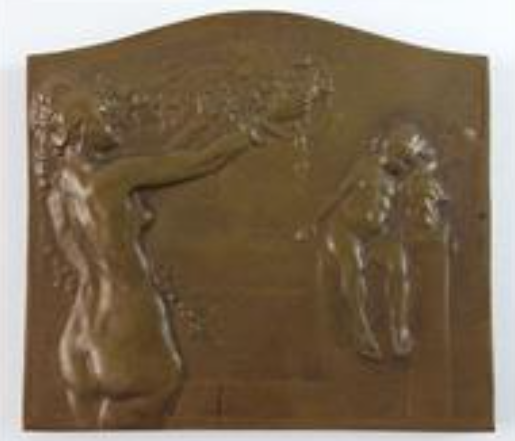Hygiene. It’s a word that we hear a lot in these times of pandemic and worries about our health. In order to slow down the spread of COVID-19, people are more and more expected to wash their hands regularly and take care of their hygiene. Hygiene itself, according to the website of the Rijksoverheid, includes all measures that will prevent that we come in contact with bacteria or viruses that can make us sick. But where does this word hygiene actually come from?
The word hygiene is inspired by the Greek goddess Hygieia. Here name is Ancient Greek, and means ‘Health’. Hygieia was a daughter of the Greek god of medicine and cures, named Aesculapius. While her father was associated with medicine, Hygieia’s part to play in Greek mythology was the prevention of disease and the continuation of health. Mental health was also associated with her. In ancient Greece, Hygieia was considered a mighty goddess. From the seventh century B.C. onward she was assigned her own cultus. Her popularity grew when she was officially recognized as a goddess by the oracle of Delphi, after an epidemic in Athens around 429 B.C. During this epidemic, she was taken to Athens, where she ‘met’ Pallas Athena, who also had Hygieia as a nickname.
Hygieia was often portrayed together with her father Aesculapius. She also was often depicted as a beautiful virgin with a soft expression. Another thing she was often portrayed with was a snake. This snake is even now often drawn together with a staff and is seen as the symbol of health care. It is called the Rod of Aesculapius. A deeper meaning behind the use of the snake as a symbol of health is the yearly shedding of its skin. This could be associated with youthfulness, and the animal was a holy animal in ancient Greece. Now the Rod of Aesculapius is also used as the symbol of pharmacies, often while it’s drinking out of a goblet of Hygieia.
An example of Hygieia and Aesculapius can be seen above. They are depicted together with a Rod of Aesculapius. This is an engraved gem, which stems from the first- or second century A.D. More of these examples can be found here.
When we look at an example of the depiction of Hygieia from the last century, we can look at this plaquette below. This one is made of bronze, by Paul Fisch in 1913. You can see here how Hygieia is portrayed as a bust on a pedestal on the front of the plaquette. In her hair there are flowers. On the back of the plaquette is Hygieia also shown, now naked, with her hands reaching forwards. In her hands, she is carrying a plate of fruit, and the snake that we talked about before is wrapped around her right arm. She reaches towards a boy who is resting against the head of Aesculapius. Behind him on the right side is a temple on a hill.


As said before, this plaquette is made by Paul Fisch in 1913. He was the son of Antoine Fisch, who founded one of the most popular medallist companies in Belgium. Paul Fisch himself studied at the Royal Academy of Fine arts. After his father died, he and his brother continued with their father’s company. In 1898 though, Paul decided to go his own way and he started his own company. This company was continued until 1924 by his widow after Paul died, shortly after the end of the first world war.
This plaquette wasn’t made by Paul Fisch alone. It was designed by Jean Lecroart. He was a Belgian sculpturer and lived from 1883 until 1967. He was born in Laeken and was trained in Ornamental Sculpture in Brussels. Afterward, he became interested in learning the medallist trade though. With this, he won many awards and he was exhibited throughout Europe.
This specific plaquette is now exhibited at the museum of Boerhaave in Leiden, although it is not clear how the museum acquired it or for what occasion the plaquette was made and how it was used afterward. I have also found a similar plaquette online which is part of a small numismatic collection held at Falk Library, consisting of mostly bronze commemorative medals dating between 1466 and 1936. Most of these pieces relate to medicine or science in some way, but it is unknown who collected them or how the collection ended up in the library. You can take a look at the online exhibit which presents all the medals here. To me it was not clear if Paul Fish and Jean Lecroart made the plaquette for any special occasion or goal in mind.
So now we know where the word hygiene originated. Hopefully Hygieia can help us stay healthy during (hopefully) the last part of the pandemic that we’re experiencing now.